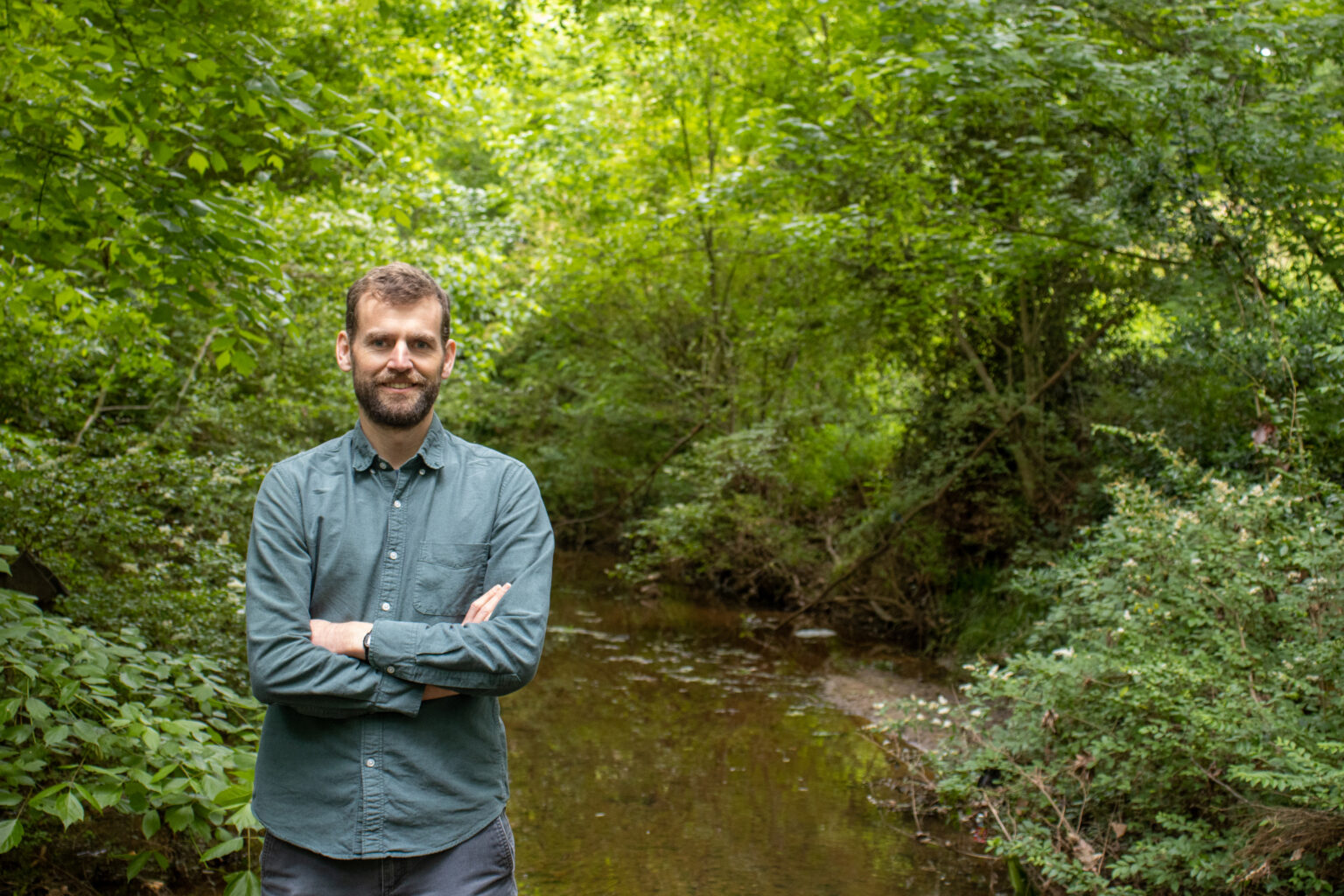The southeast is a hotspot for freshwater fish biodiversity—Georgia ranks third in the U.S. for total number of native freshwater fishes. But development threatens this diversity, and projects designed to offset harm may not have a lasting positive impact on fish, according to new research from a team of University of Georgia researchers.
Their research has implications for the stream restoration projects required by Section 404 of the Clean Water Act, the law that regulates adverse impacts to streams and other waterbodies.
“Our broad objectives were to see if there was any evidence of ecological benefits to fish communities in Georgia at compensatory stream mitigation sites,” said Edward Stowe, a River Basin Center affiliate and alumnus of the Odum School of Ecology (Ph.D. ’23). “And more specifically, we wanted to see if benefits varied, depending on whether we were looking at the whole fish community versus just species that are considered more sensitive.”
They found that improvements in metrics like fish abundance and diversity were temporary, with numbers reverting to baseline within seven years of a restoration project.
Compensatory mitigation and natural channel design: The bedrock and background of steam restoration
When developers undertake a project that impacts waterways, the Clean Water Act requires a no-net-loss process. This means that harm to freshwater ecosystems should first be avoided, and where avoiding harm isn’t possible, it should be limited, and finally—if harm can’t be limited—it should be offset in some way.
In practice, the last option is nearly always chosen, with developers or other parties purchasing compensatory mitigation credits from mitigation bankers—private companies trained in restoring wetlands and rivers.
The compensatory mitigation system is in place partly because it’s fairly cut and dry: In essence, when industry or infrastructure projects harm waterways, parties are required to recoup ecosystem or species loss, which they do by purchasing credits generated via stream restoration projects carried out elsewhere. So a project with net harm is undertaken but is offset by a project with net good—at least supposedly.
It’s an environmental balancing act. The idea is to recover in one location what is lost via harm to waterways elsewhere.
For rivers, this recovery is most often done through a restoration method called natural channel design.
Practitioners physically reconstruct the river channel, in theory altering the freshwater habitat to allow native plants and animals to flourish.
“Throughout the history of restoration science, there’s been this theory that good habitat equates to full or healthy populations of animals,” explained Stowe. “So, if you can bring the habitat back, then you can restore the animals.”
But per the results of his paper published in Restoration Ecology, the mitigation banking system may be more navigable than it is effective.
Tree cover loss, temporary impact
To evaluate stream mitigation’s impact on fish, the team of researchers used publicly available monitoring data that restoration projects are required to gather for up to seven years. In the first few years, measurable improvements were made to fish abundance and diversity—meaning, more fish, and more kinds of fish were reported—but the progress didn’t last, dropping off before the end of the seven-year monitoring period.
“We wanted to see what the evidence for mitigation projects improving fish community metrics was, to see how this no-net-loss process looked in the context of fish, which are often the target for restoration activities,” said Stowe. Fishes can be good bioindicator species, or a kind of proxy for overall freshwater ecosystem health. “This was an opportunity for us to use these publicly available data that had already been collected to ask the question, ‘Do we see any real benefits to stream fish communities?’”
Again, the unfortunate answer is not really. The brief improvement within the first few years might simply be due to tree cover loss, explained Stowe.
When a natural channel design project is undertaken, trees along a bank are often cleared, resulting in a sunnier stream, and in turn, increased productivity. But some evidence suggests that the benefits are mostly to common fish species that aren’t the target of conservation, and benefits disappear as tree cover grows back and the stream becomes shaded again.
“It’s not that shade is a bad thing; rather, it appears that reshaping the channel, even to mimic a more natural condition, rarely alleviates the factors limiting fish diversity and abundance in these streams chosen for restoration,” noted co-author Mary Freeman, USGS and River Basin Center affiliate.
Restoration on the watershed scale: A possible path forward
Policy makers, practitioners and conservation groups—and really, anyone concerned that the Clean Water Act is implemented judiciously—should rethink stream restoration’s current reliance on natural channel design.
“My hope is that we continue to ask whether there are alternatives, or systems that can augment this approach that may allow the incentivization of projects that operate more at the watershed scale,” said Stowe. Policy-level incentives to fence cattle out of streams throughout a watershed, for instance, could prevent erosion and bank incision, improving fish habitat.
Stowe’s research was funded by the Science Support Partnership, a collaboration between USGS and the Fish and Wildlife Service, and the biodiversity pillar of the Network for Engineering with Nature, an active community of researchers, practitioners and educators who are addressing current major infrastructure challenges.
“I hope that this paper adds to the evidence that we need to think more holistically about how to offset harm to streams that we inevitably damage or destroy,” said Stowe.

